#ebook full stack web developer
Explore tagged Tumblr posts
Text

Full-Stack Web Development In 7 days Ebook
Description : Full-Stack Web Development In 7 Days" offers comprehensive content that covers all aspects of web development, making it a great resource for beginners and intermediate learners alike. This makes it easier for you to promote the product with confidence, knowing that it will provide value to your audience.
High-Quality Content: The quality of the content in "Full-Stack Web Development In 7 Days" is crucial when it comes to promoting any digital product. The e-book offers clear explanations, detailed examples, and practical tips, making it a valuable resource for anyone interested in web development.
0 notes
Text
Full-Stack Web Development In 7 days Ebook
Title: Full-Stack Web Development in 7 Days: Your Comprehensive Guide to Building Dynamic Websites
Introduction: Are you eager to embark on a journey to become a full-stack web developer? Look no further! In this comprehensive ebook, "Full-Stack Web Development in 7 Days," we will guide you through the fundamental concepts and practical skills necessary to build dynamic websites from front to back. Whether you're a beginner or an experienced programmer looking to expand your skill set, this guide will equip you with the knowledge and tools to kickstart your journey as a full-stack web developer in just one week.
Day 1: Introduction to Web Development:
Understand the foundations of web development, including the client-server architecture and HTTP protocol.
Learn HTML, CSS, and JavaScript—the building blocks of any web application.
Dive into the basics of responsive web design and create your first static webpage.
Day 2: Front-End Development:
Explore the world of front-end development frameworks like Bootstrap and learn how to build responsive and visually appealing user interfaces.
Master JavaScript libraries such as jQuery to add interactivity and dynamic elements to your web pages.
Gain hands-on experience with front-end frameworks like React or Angular to create robust single-page applications.
Day 3: Back-End Development:
Discover the essentials of back-end development using popular programming languages like Python, JavaScript (Node.js), or Ruby.
Learn about server-side frameworks such as Express, Django, or Ruby on Rails to build powerful back-end applications.
Connect your front-end and back-end components, enabling them to communicate and exchange data seamlessly.
Day 4: Databases and Data Management:
Dive into the world of databases and understand the difference between relational and NoSQL databases.
Learn how to work with popular databases like MySQL, PostgreSQL, or MongoDB.
Implement database integration into your web applications, enabling data storage, retrieval, and manipulation.
Day 5: API Development and Integration:
Explore the fundamentals of RESTful APIs and their role in modern web development.
Build your own APIs using frameworks like Express or Flask to expose data and functionality to external applications.
Integrate third-party APIs, such as social media APIs or payment gateways, to enhance the functionality of your web applications.
Day 6: Security and Performance Optimization:
Understand common security vulnerabilities in web applications and learn how to protect against them.
Implement authentication and authorization mechanisms to secure user data and control access.
Optimize your web applications for performance, including techniques like caching, code minification, and server-side rendering.
Day 7: Deployment and Continuous Integration:
Learn how to deploy your web applications to a hosting platform or a cloud infrastructure like AWS, Azure, or Heroku.
Set up continuous integration and deployment workflows using tools like Git, GitHub, and Docker.
Finalize your full-stack web development journey by exploring best practices for maintenance, troubleshooting, and scalability.
Conclusion: "Full-Stack Web Development in 7 Days" provides a structured and comprehensive roadmap to help you become a proficient full-stack web developer within a week. By following this ebook, you will gain a solid foundation in front-end and back-end development, databases, APIs, security, performance optimization, and deployment. Get ready to unleash your creativity and embark on an exciting career in web development. Start your journey today and unlock the endless possibilities of building dynamic and interactive websites.
2 notes
·
View notes
Text
How to Make Money with Programming: 9 Proven Ways to Earn from Your Coding Skills – Infographic
Programming isn’t just a skill, it’s a passport to countless income opportunities. Whether you’re a beginner or a seasoned developer, there are many ways to turn your coding knowledge into a reliable stream of income.
In this blog post infographic, we’ll explore nine effective ways to make money with programming, from starting a blog to developing games and selling online courses.

Download Infographic
1. Blogging
If you enjoy writing and have a passion for coding, blogging can be a fantastic way to earn money. Starting a programming blog allows you to share tutorials, code snippets, solutions to technical problems, or industry news. Over time, as your blog gains traffic, you can monetise it through:
Google AdSense
Affiliate Marketing (promote tools like GitHub Copilot, hosting providers, or IDEs)
Sponsored Posts
Email List Marketing
Choose a specific niche like Python automation, web development, or data science to attract a targeted audience. The more value you provide, the more loyal readers and passive income you can build.
2. Sell Books
Programmers who can write clearly and teach effectively often find success in self-publishing. Writing an eBook or paperback on a specific programming language, framework, or topic can generate steady income. You could publish:
Beginner guides (e.g. “Learn Python in 30 Days”)
Advanced problem-solving books
Interview preparation guides
You can sell books on platforms like Amazon Kindle Direct Publishing, Gumroad, or your own website. Add bonus material like source code or video content to increase value.
3. Web/App Development
One of the most straightforward and lucrative ways to make money with programming is by developing websites or mobile apps. Businesses everywhere need online presence and custom solutions. You can:
Build websites using WordPress, React, or Laravel
Develop mobile apps using Flutter or React Native
Offer eCommerce development (e.g. Shopify or WooCommerce)
You can sell your services to local businesses, startup founders, or online clients. Alternatively, create your own app or SaaS (Software as a service) and monetise it through subscriptions or ads.
4. YouTube Tutorials
YouTube is a powerful platform for programmers looking to build an audience and generate income. If you’re good at explaining concepts, start a programming channel with:
Coding tutorials (e.g. “Build a Todo App in JavaScript”)
Explainer videos (e.g. “What is an API?”)
Career advice and learning paths
You can earn money through YouTube ad revenue, channel memberships, sponsored videos, and affiliate links. Once your audience grows, you can also use your channel to promote your own products, like courses or software.
5. Freelancing
Freelancing offers flexibility and the ability to earn while working on a wide variety of projects. Platforms like:
Upwork
Freelancer
Fiverr
Toptal
…connect you with clients looking for developers. Whether it’s bug fixes, full-stack development, automation scripts, or WordPress setup, there’s always demand. To succeed, create a strong portfolio, offer competitive pricing, and deliver great results to gain repeat clients and referrals.
6. Games Development
If you’re passionate about gaming and have strong programming skills, consider game development. Platforms like Unity (C#) or Unreal Engine (C++) make it accessible to solo developers. You can:
Create indie games and publish them on Steam or itch.io
Build mobile games and monetise via ads or in-app purchases
Sell game assets, templates, or source code
Some developers also earn by creating tutorials, documentation, or toolkits that help other game developers.
7. Competitions
Coding competitions and hackathons are not just fun, they can be profitable too. Websites like:
HackerRank
Codeforces
TopCoder
Kaggle (for data science)
…often have prize money or sponsorship opportunities. Many companies also host hackathons and innovation challenges where winners receive cash, job offers, or equity. Even if you don’t win, competitions sharpen your skills and can improve your resume or portfolio.
8. Sell Software
Have a great idea for a tool that solves a problem? Package it as software and sell it! This could include:
SaaS tools (e.g. CRM for freelancers)
Developer tools (e.g. code snippet managers)
Desktop apps (e.g. productivity tools)
Browser extensions
You can monetise through one-time purchases, monthly subscriptions, or freemium models with paid upgrades. Promote your product through your blog, social media, or YouTube channel to build traction.
9. Sell Courses
Online learning is booming, and if you’re an expert in a topic, you can create and sell your own programming course. Platforms like:
Udemy
Teachable
Gumroad
Skillshare
…allow you to host and sell your courses to a global audience. Courses could focus on specific programming languages, frameworks, or skills like API development, data analysis, or building real-world apps.
High-quality video content, practical projects, and community support (e.g. Discord or Facebook group) will help you stand out and keep your students engaged.
Conclusion
Programming is one of the most versatile and valuable skills you can have in today’s economy. Whether you would like to work for yourself or build a side hustle, there are many ways to make money with coding, from sharing your knowledge through blogs or courses to building products and solutions for clients or the marketplace.
The key is to start with one path, stay consistent, and keep learning. As you grow in experience and confidence, you can diversify your income by combining multiple strategies. For example, many successful developers run blogs, YouTube channels, and sell software or courses all at once.
So pick your starting point, and begin turning your coding skills into real-world income!
0 notes
Text

What is Web Designing and Development Course for Beginners
Are you interested in building a career in web technology? Look no further! A web designing and development course is the perfect starting point for beginners. This comprehensive course teaches you the fundamentals of creating visually appealing and functional websites.
What You'll Learn:
Web designing principles (UI/UX, color theory, typography)
HTML, CSS, JavaScript, and other programming languages
Website development frameworks (WordPress, Joomla, Drupal)
Database management (MySQL, MongoDB)
Web security and best practices
Course Benefits:
Develop in-demand skills for a lucrative career
Build professional-looking websites for personal or client projects
Enhance creativity and problem-solving skills
Stay up-to-date with industry trends and technologies
Improve job prospects in the tech industry
Career Opportunities:
Web Designer
Web Developer
Front-end Developer
Back-end Developer
Full-stack Developer
Getting Started:
Enroll in online courses (Udemy, Coursera, Codecademy)
Join web development communities (GitHub, Stack Overflow)
Practice building personal projects
Network with industry professionals
Take the First Step:
Embark on an exciting journey in web designing and development. Start learning today and unlock a world of creative possibilities!
Call-to-Action (CTA):
Explore online courses and tutorials
Download a free web design and development eBook
Join our web development community
Recommended Next Posts:
"Top Web Designing and Development Courses Online"
"Web Designing vs Web Development: Key Differences"
"Web Designing and Development Tools and Software"
"Career Paths after Completing a Web Designing and Development Course"
"Web Designing and Development Best Practices"
#reading#webdevelopmentcourse#webdevelopment#webdesigning#webdevelopmenttraining#html#css#webdevelopers#software#students#webdevelopments#digitalmarketing#webdevelopmentsupport#it#education#graphicdesigning#webdevelopmentcompany#seo#webdevelopmentservices#placements#humanresourcetraining#onlineaicourse#scholarships#androidtraining#iostraining#chandigarh#webdevelopmentagency
1 note
·
View note
Text
The Ultimate Beginner's Guide to Learning Python Online
Python's simplicity and versatility have made it a go-to programming language for many aspiring developers. Whether you're interested in web development, data analysis, or automating tasks, Python is an excellent starting point. Considering the kind support of Learn Python Course in Pune, Whatever your level of experience or reason for switching from another programming language, learning Python gets much more fun.

But how do you begin learning Python? Here's a detailed guide to some of the best online resources for Python beginners.
1. Hands-On Interactive Tutorials
Interactive tutorials are a great way to dive into Python with hands-on experience. These platforms typically offer coding exercises, quizzes, and step-by-step guidance from basic concepts to more advanced topics. For beginners, learning by doing is invaluable, as it helps reinforce concepts and ensures immediate application of what you've learned.
2. Comprehensive Video Courses
Video courses cater to visual and auditory learners by providing detailed explanations and demonstrations of Python concepts. These courses, which range from free to subscription-based, offer a structured learning path with expert instructors. The visual demonstrations can make complex topics easier to grasp and provide a more engaging learning experience.
3. Detailed Documentation and Guides
Python’s official documentation is a treasure trove of information for beginners. It includes extensive guides, tutorials, and references on all aspects of the language. Additionally, many online communities and forums provide detailed guides and explanations to help you understand various Python topics and libraries. Keeping the official documentation handy is beneficial for quick and reliable reference.
4. Coding Challenge Platforms
Coding challenge platforms are designed to enhance your problem-solving skills through practical exercises. These platforms present problems of varying difficulty levels, allowing you to apply your Python knowledge and learn from instant feedback and solutions. Regular practice on these sites can significantly improve your coding abilities.
5. Informative Blogs and Articles
Numerous tech blogs and websites offer articles and tutorials on Python, covering specific topics, tips, tricks, and best practices. Following a few reputable blogs can keep you updated on the latest Python trends and techniques, providing insights that structured courses might not cover. Enrolling in the Best Python Certification Online can help people realise Python’s full potential and gain a deeper understanding of its complexities.

6. Engaging Online Communities and Forums
Joining online communities and forums is an excellent way to supplement your learning. Platforms like Stack Overflow, Reddit, and Python-specific forums offer spaces where you can ask questions, share knowledge, and learn from other programmers' experiences. These communities provide valuable support and diverse perspectives, helping you troubleshoot and improve your skills.
7. Comprehensive Books and eBooks
Although not exclusively online, many books and eBooks on Python are available for download, offering a thorough and structured learning approach. Look for well-reviewed, beginner-friendly books recommended by the Python community. A good book can deepen your understanding of concepts and serve as a reliable reference as you advance.
8. Real-World Project-Based Learning
Project-based learning is a practical approach to applying Python in real-world scenarios. Building small projects, such as web scrapers, games, or data analysis tools, can solidify your understanding and provide hands-on experience. Many online resources offer project ideas and detailed guides to help you get started. Projects make learning more engaging and practical.
9. MOOCs (Massive Open Online Courses)
MOOCs offered by universities and educational platforms often include Python courses tailored for beginners. These courses provide a structured curriculum, assignments, and sometimes certificates upon completion. Enrolling in a MOOC can give you a classroom-like experience with the flexibility to learn at your own pace.
Conclusion
Exploring these varied resources will help you find the learning methods and materials that best suit your style and pace. The key to mastering Python, like any other skill, lies in consistent practice and a willingness to explore and experiment. Happy coding!
#python course#python training#python#tech#technology#python online training#python programming#python online course#python online classes
0 notes
Text
Top .NET Online Training in Ameerpet | NareshIT
Full Stack .NET Online Training
Introduction to NareshIT:
A Well-Known provider of IT training, Naresh I Technologies provides a large selection of technology courses. NareshIT has a history of turning out talented professionals and is renowned for its extensive curriculum, knowledgeable instructors, and hands-on project experience. The Full Stack.NET Online Training is a flagship curriculum that aims to provide students with the necessary information and abilities to succeed in the software development profession.
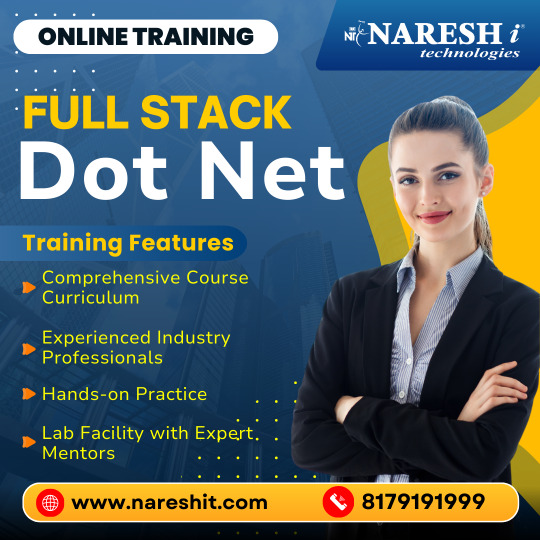
Course Overview:
Frontend and backend development with Microsoft's.NET framework are covered in the Full Stack.NET Online Training offered by NareshIT. The course is designed to give students a thorough understanding of a variety of.NET technologies, including SQL Server, ASP.NET, C#, and advanced frontend technologies like Angular or React.
Key Features of the Course:
Comprehensive Curriculum: Modules on HTML, CSS, JavaScript, C#, ASP.NET, MVC, Web API, Entity Framework, LINQ, SQL Server, and other topics are covered in the training course.
Hands-on Training: Real-world projects and case studies are used to emphasize practical learning and give students actual experience.
Experienced Trainers: Industry professionals with years of.NET technology knowledge lead the sessions.
Flexible Learning: Students can learn at their own speed with online training and have access to recorded sessions for later use.
Job Assistance: A specialized placement cell assists students in landing jobs in prestigious firms by helping them prepare for interviews, create strong resumes, and find jobs.
Course Modules:
Introduction to Web Technologies:
Basics of HTML, CSS, and JavaScript
Responsive Design with Bootstrap
Core .NET Programming:
C# Fundamentals and Advanced Concepts
Object-Oriented Programming (OOP) in C#
Exception Handling, File I/O, and Collections
Database Management:
SQL Server Basics and Advanced Queries
Database Design and Normalization
Entity Framework and LINQ
ASP.NET Development:
ASP.NET Web Forms and MVC
Razor Syntax, View Engine, and Data Binding
State Management and Security
Web API and Services:
Creating and Consuming Web APIs
RESTful Services
Authentication and Authorization
Frontend Frameworks:
Angular or React (based on the chosen track)
Component-based Architecture
State Management and Routing
Project Work:
Real-time projects integrating all learned technologies
Debugging and Performance Tuning
Deployment and Hosting
Why Choose NareshIT for Full Stack.NET Online Training?
Industry-Relevant Curriculum: To keep up with the latest technical developments and industry requirements, the course material is updated on a regular basis.
Expert Guidance: Gain knowledge from experts who infuse the classroom with their real-world knowledge and experiences.
Interactive Learning: Ask questions and participate in live, interactive forums.
Certification: Upon completion, you will be awarded a certification that attests to your proficiency.
Student Support and Resources:
Live Doubt Sessions: Frequent sessions for clearing doubts to assist pupils with their questions.
Study Materials: Availability of in-depth study guides, eBooks, and instructional videos.
Community Access: Become a part of a professional and learning community to network and continue learning.
Conclusion:
Aspiring developers can become skilled Full-Stack Developers with NareshIT's Full Stack.NET Online Training. Students are well-prepared to take on the difficulties of the software development world and land fulfilling positions in the IT industry because to their combination of theoretical knowledge and practical abilities.
For more details and enrollment, visit Naresh I Technologies official website.
#dotnet#Aspdotnet#aspdotnetcore#csharpdotnet#nareshit#education#software#onlinetraining#it training institute
0 notes
Text
Master Full-Stack Web Development in 7 Days with the Ultimate Ebook

Full-stack web development is a crucial skill in today's digital world, offering numerous career opportunities. If you've ever wanted to become a proficient full-stack developer but felt overwhelmed by the learning curve, the "Full-Stack Web Development In 7 Days Ebook" is here to help. In this comprehensive review, we'll explore how this ebook can guide you through the journey of becoming a full-stack web developer in just one week.
Chapter 1: Introduction to Full-Stack Web Development In 7 Days Ebook
The "Full-Stack Web Development In 7 Days Ebook" starts by providing a strong foundation in full-stack web development. It covers the basics of both front-end and back-end development, emphasizes the role of databases, and underscores the importance of understanding the entire web development stack.
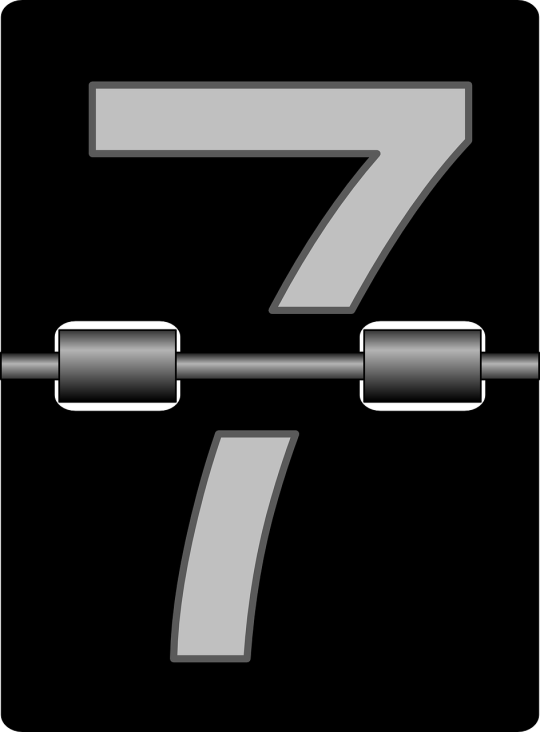
Chapter 2: HTML, CSS, and JavaScript Basics
Diving deep into the core languages of web development, this chapter teaches you the essentials of HTML for structuring web pages, CSS for styling them, and JavaScript for adding interactivity and functionality.
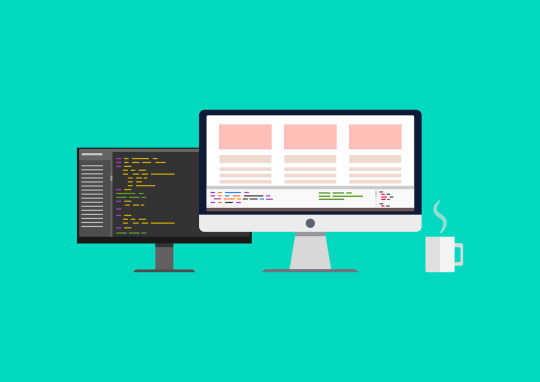
✔️Click Here To Visit - OFFICIAL WEBSITE✔️
✔️Click Here To Visit - OFFICIAL WEBSITE✔️
✔️Click Here To Visit - OFFICIAL WEBSITE✔️
Chapter 3: Building Dynamic Websites with Server-Side Programming
This chapter delves into server-side programming languages like Python, Ruby, or Node.js. It guides you through server-side logic, data management, and database interactions to create dynamic and responsive websites.
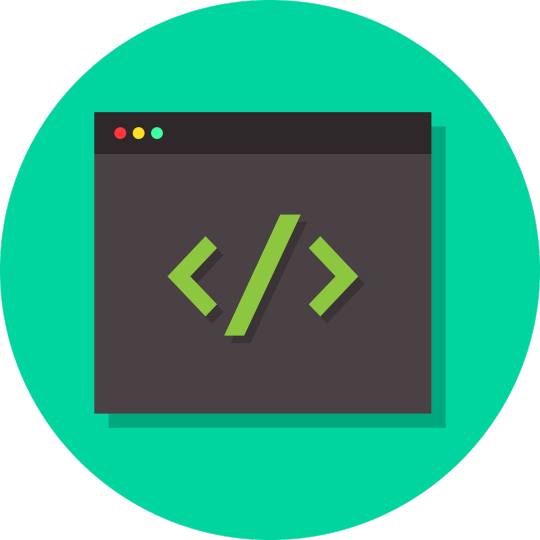
Chapter 4: Front-End Frameworks
Here, you'll be introduced to popular front-end frameworks such as React, Angular, or Vue.js. You'll learn how to harness these frameworks to build efficient and scalable user interfaces, enhancing the overall user experience of your web applications.

Chapter 5: Back-End Development and APIs
This chapter focuses on back-end development, covering topics like RESTful APIs, authentication, and database integration. You'll acquire the skills to create secure and robust back-end systems that seamlessly communicate with the front-end and manage data manipulation.
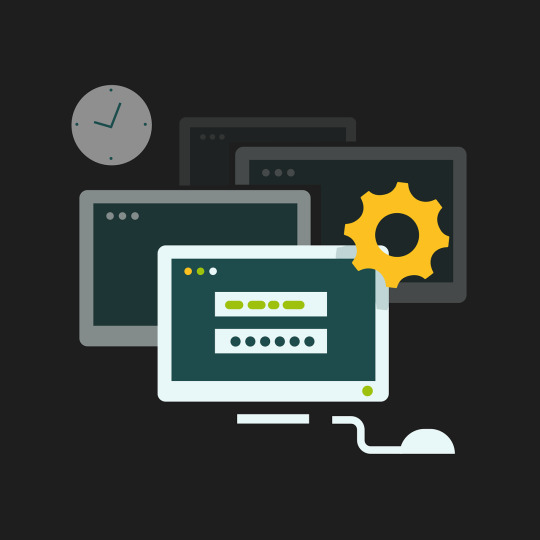
Chapter 6: Deployment and Testing
Chapter 6 concentrates on deploying your web applications to production environments and rigorously testing them for reliability and performance. You'll explore deployment platforms, version control, and automated testing tools to ensure smooth and error-free operation.

Chapter 7: Scaling and Advanced Concepts
In the final chapter, you'll delve into advanced concepts such as cloud computing, scalability, and performance optimization. You'll uncover techniques for scaling your applications to handle increased traffic and explore best practices for efficient web development.
The "Full-Stack Web Development In 7 Days Ebook" is your concise yet comprehensive guide to mastering full-stack web development. This structured learning path equips you with the skills and knowledge required to become a proficient full-stack developer in just one week, regardless of whether you're a beginner or have prior programming experience.
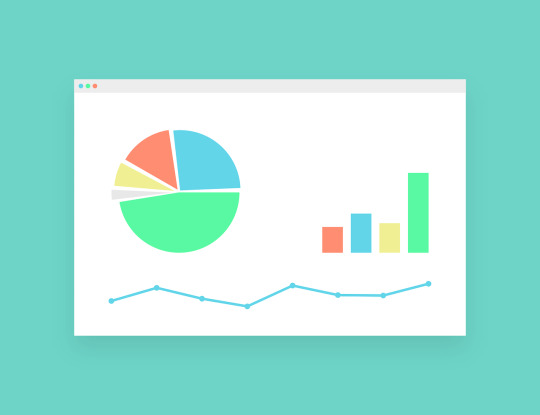
✔️Click Here To Visit - OFFICIAL WEBSITE✔️
✔️Click Here To Visit - OFFICIAL WEBSITE✔️
✔️Click Here To Visit - OFFICIAL WEBSITE✔️
Why Choose the "Full-Stack Web Development In 7 Days Ebook"?
Structured Learning Path: This ebook offers a well-organized journey through the fundamentals of web development, building upon concepts progressively over 7 days.
Hands-On Approach: Practical examples and exercises enable you to apply your newfound knowledge effectively in real-world scenarios.
Comprehensive Content: From HTML, CSS, and JavaScript basics to server-side programming, front-end frameworks, back-end development, deployment, testing, and advanced concepts – this ebook covers it all.
Time-Efficient Learning: The 7-day timeline ensures you acquire a solid foundation quickly, without compromising on depth.
Suitable for All Skill Levels: Whether you're a newcomer or an experienced developer, the ebook caters to various skill levels.
What You'll Learn
Day 1–2: Front-End Fundamentals
HTML and CSS basics
Building static web pages
Creating responsive designs
Understanding the Document Object Model (DOM)
Day 3–4: JavaScript Mastery
Fundamentals of JavaScript programming
Handling events and user interactions
Manipulating the DOM dynamically
Introduction to asynchronous programming
Day 5–6: Back-End Development
Introduction to Node.js and Express.js
Building server-side logic and APIs
Integrating databases using MongoDB
User authentication and data security
Day 7: Bringing It All Together
Full-stack project development
Deploying your web application
Performance optimization and testing
Tips for continuous learning and growth
In just 7 days, the "Full-Stack Web Development In 7 Days Ebook" empowers you with the skills and knowledge needed to embark on a rewarding journey in the world of web development. Whether you're aiming to create your own web applications, pursue a career in software development, or enhance your existing skill set, this ebook is the ultimate guide that will take you from beginner to proficient full-stack developer.
Don't miss out on the opportunity to unlock your potential in the rapidly evolving tech landscape. Invest in your future today by grabbing a copy of the "Full-Stack Web Development In 7 Days Ebook" and start your journey towards mastering the art of full-stack web development. Your dream career awaits, and this ebook is your gateway to success. Click the link below to purchase and embark on your transformational journey now!
✔️Click Here To Visit - OFFICIAL WEBSITE✔️
✔️Click Here To Visit - OFFICIAL WEBSITE✔️
✔️Click Here To Visit - OFFICIAL WEBSITE✔️
#WebDevelopment#FullStack#Programming#WebDevEbook#Coding#TechSkills#WebDesign#EbookReview#LearnToCode#CareerOpportunities#FullStackDeveloper#DevelopmentJourney#TechEducation#WebAppDevelopment#CodingResources#DigitalSkills#OnlineLearning#WebDevelopmentGuide#FrontEnd#BackEnd#WebDevCommunity#SoftwareDevelopment#CodingBootcamp#WebDevTools#TechReview
1 note
·
View note
Text
Full-Stack Web Development In 7 days Ebook
1 note
·
View note
Text
#Full-Stack Web Development for Beginners in 7 Days#web series#web design#web finds#web developing company#web cartoon
0 notes
Text
"The Fundamentals of Web Development: A Beginner's Guide"
Introduction:
In today's digital age, web development has become an essential skill for anyone looking to create a presence on the internet. Whether you want to build a personal website, launch an online business, or pursue a career in technology, understanding the fundamentals of web development is crucial. This beginner's guide aims to provide a comprehensive overview of web development, covering key considerations and offering insights to help you get started on your web development journey.
Table of Contents:
What is Web Development?
1.1 Defining Web Development
1.2 The Importance of Web Development
Understanding Web Technologies
2.1 Front-End Development
2.2 Back-End Development
2.3 Full-Stack Development
Key Considerations for Web Development
3.1 Planning and Design
3.2 HTML and CSS Essentials
3.3 Programming Languages and Frameworks
3.4 Responsive Design and Mobile Optimization
3.5 Testing and Debugging
3.6 Security and Performance Optimization
3.7 Content Management Systems (CMS)
Web Development Workflow
4.1 Project Setup and Requirements Gathering
4.2 Wireframing and Prototyping
4.3 Development and Implementation
4.4 Testing and Deployment
4.5 Maintenance and Updates
Web Development Resources and Learning Path
5.1 Online Courses and Tutorials
5.2 Books and eBooks
5.3 Web Development Communities and Forums
5.4 Continuous Learning and Skill Enhancement
What is Web Development?
1.1 Defining Web Development:
Web development refers to the process of creating, building, and maintaining websites and web applications. It involves various aspects, including web design, web programming, and database management, to bring a website to life and make it functional on the internet.
1.2 The Importance of Web Development:
In today's digital landscape, having a strong online presence is vital for individuals and businesses alike. Web development empowers individuals to showcase their work, promote their services, or share their ideas with a global audience. For businesses, an effective website can attract customers, enhance brand visibility, and drive revenue. Understanding web development enables you to leverage the power of the internet and unlock endless possibilities.
Understanding Web Technologies
2.1 Front-End Development:
Front-end development focuses on the visual and interactive elements of a website that users see and interact with directly. It involves utilizing HTML (Hypertext Markup Language), CSS (Cascading Style Sheets), and JavaScript to structure, style, and add interactivity to web pages. Front-end developers work closely with web designers to bring their creative visions to life, ensuring seamless user experiences.
2.2 Back-End Development:
Back-end development deals with the server-side aspects of a website that are not directly visible to users. It involves building the underlying infrastructure, handling databases, and implementing server-side logic. Back-end developers primarily work with programming languages like Python, PHP, Ruby, or Java to create dynamic and data-driven websites.
2.3 Full-Stack Development:
Full-stack development refers to the practice of working on both the front-end and back-end aspects of web development. Full-stack developers have a broad skill set and are capable of handling all aspects of web development, from creating user interfaces to managing databases and server infrastructure. They have a comprehensive understanding of the entire web development process.
Key Considerations for Web Development
3.1 Planning and Design:
Before diving into the development process, it is crucial to plan and design your website effectively. This involves identifying your target audience, defining website goals and objectives, creating wireframes or prototypes, and establishing a visual design that aligns with your brand identity.
3.2 HTML and CSS Essentials:
HTML and CSS form the foundation of web development. HTML provides the structure and content of a web page, while CSS controls its presentation and styling. Understanding the basics of HTML and CSS is essential for any aspiring web developer.
3.3 Programming Languages and Frameworks:
Web development involves working with various programming languages and frameworks to add functionality to your website. Popular programming languages include JavaScript, Python, Ruby, and PHP, while frameworks like React, Angular, and Laravel offer pre-built tools and libraries to expedite development.
3.4 Responsive Design and Mobile Optimization:
With the increasing usage of mobile devices, ensuring that your website is responsive and optimized for different screen sizes is crucial. Responsive design allows your website to adapt to different devices, providing a seamless user experience across desktops, tablets, and smartphones.
3.5 Testing and Debugging:
Thorough testing and debugging are essential to ensure that your website functions properly and delivers the intended user experience. Testing should cover compatibility across different browsers, responsiveness, functionality, and performance. Debugging involves identifying and fixing any issues or errors that may arise during the development process.
3.6 Security and Performance Optimization:
Web security is a critical consideration to protect your website and user data from potential threats. Implementing security measures, such as secure authentication, data encryption, and secure hosting, helps safeguard your website. Additionally, optimizing website performance by optimizing code, caching, and minimizing file sizes enhances user experience and search engine rankings.
3.7 Content Management Systems (CMS):
Content Management Systems (CMS) like WordPress, Drupal, and Joomla provide a user-friendly interface to create and manage website content without extensive coding knowledge. Understanding how CMS platforms work can be beneficial for individuals and businesses looking for a simpler way to maintain their websites.
Web Development Workflow
4.1 Project Setup and Requirements Gathering:
The initial phase involves understanding project requirements, defining goals, and setting up the development environment. This includes selecting a suitable programming language, framework, and development tools.
4.2 Wireframing and Prototyping:
Wireframing and prototyping help visualize the website's structure and layout before diving into development. Tools like Sketch, Figma, or Adobe XD can assist in creating wireframes and interactive prototypes.
4.3 Development and Implementation:
During this phase, developers begin coding the website based on the wireframes and prototypes. This involves writing HTML, CSS, JavaScript, and server-side code to create the desired functionalities and interactions.
4.4 Testing and Deployment:
Thorough testing is performed to identify and fix any bugs or issues. Once the website passes the testing phase, it is ready for deployment to a web server or hosting platform.
4.5 Maintenance and Updates:
Websites require ongoing maintenance to ensure they remain secure, performant, and up-to-date. Regular updates, security patches, and bug fixes are essential to provide a seamless user experience and protect against potential vulnerabilities.
Web Development Resources and Learning Path
5.1 Online Courses and Tutorials:
Online platforms like Udemy, Coursera, and Codecademy offer a wide range of web development courses and tutorials. These resources cater to beginners and advanced learners, providing structured learning paths and hands-on exercises.
5.2 Books and eBooks:
Numerous books and eBooks are available that cover various aspects of web development. Some popular titles include "HTML and CSS: Design and Build Websites" by Jon Duckett and "JavaScript: The Good Parts" by Douglas Crockford.
5.3 Web Development Communities and Forums:
Engaging with web development communities and forums can be an excellent way to learn from experienced developers, seek advice, and stay updated with the latest industry trends. Communities like Stack Overflow and Reddit have active web development communities.
5.4 Continuous Learning and Skill Enhancement:
Web development is a dynamic field, constantly evolving with new technologies and trends. Continuous learning through blogs, podcasts, attending conferences, and participating in coding challenges can help you stay ahead in the rapidly changing web development landscape.
Conclusion:
Web development is an exciting and rewarding skill to acquire in today's digital world. By understanding the fundamentals of web development, considering key aspects, and following a structured workflow, you can create impressive websites and web applications. Remember to continuously learn and explore new technologies to stay relevant in this ever-evolving field. So, start your web development journey today and unlock the limitless potential of the internet.
0 notes
Text
Accelerate Your Web Development Skills with the Full-Stack Web Development In 7 Days Ebook
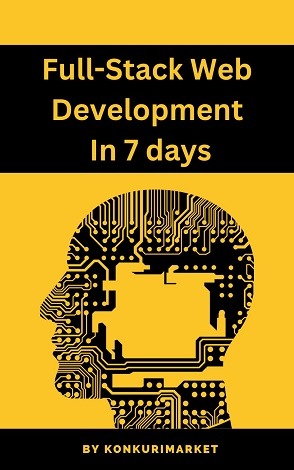
Discover the ultimate resource to fast-track your web development journey! The Full-Stack Web Development In 7 Days Ebook is a comprehensive guide that covers front-end and back-end development, offering clear explanations and practical examples. With its organized structure, interactive approach, and thorough coverage of essential technologies, this ebook equips beginners with the foundational knowledge needed to excel in the dynamic field of web development. Don't miss the chance to accelerate your skills and unlock endless possibilities in just 7 days!
To get the access of Full-Stack Web Development Ebook click here
#internet computer#computer internet#internet computer class#internet computer crypto#internet#internet computer protocol#internet computer price prediction#computer internet class#internet computer icp#computer and internet awareness#computer internet mcq#internet computer coin#internet computer price#computer#computer internet course#internet computer dfinity#computer internet question#internet computer coin prediction#computer internet by preeti mam#full stack web development#web development#full stack development#development#web development roadmap#full stack web development course#web development tutorial for beginners#web development guide#learn web development#web development tutorial#i tried coding on a chromebook for 7 days
0 notes
Text
Full-Stack Web Development In 7 days Ebook
Other information please click here:https://bit.ly/3TYwEmp
The demand for web development skills is high, and there are many individuals who are looking for resources to learn these skills. By promoting this e-book, you can tap into this demand and provide a valuable resource to your audience. Buy now

View On WordPress
0 notes
Text
How to Get Started in Full Stack Web Development
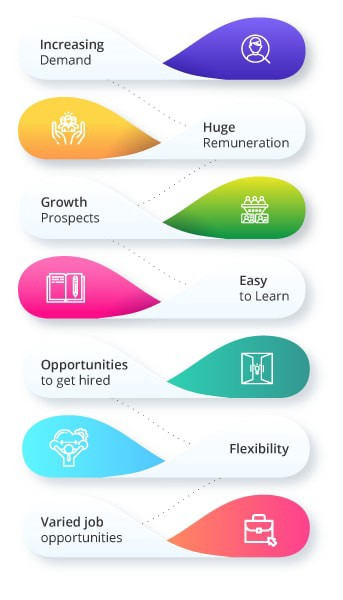
If you want to get into full-stack web development, it helps to have a solid foundation in various software and programming languages. This article will explore JavaScript, Node.js, MongoDB, ExpressJS, and more. To learn more, read on! And remember to keep your eye on the latest software development news. Read on to discover more ways to get started. We’ll look at the basics of each of these technologies and what makes them a perfect fit for full-stack development.
JavaScript
Full stack web development with JavaScript has many benefits. The technology is versatile, with a large number of readily available libraries and tools. As a full-stack web developer, you’ll have access to a variety of resources, including ebooks, documentation, and code from dedicated communities. In addition to these resources, you’ll be able to leverage the growing community’s knowledge of the technology and the trends it’s driving.
For example, let’s imagine a restaurant: The front end is the pleasant seating area for customers. Behind the scenes, however, is a fully functioning kitchen and pantry. Developers gather materials from these areas and perform operations in the kitchen. Finally, they serve prepared meals to users. The same principle applies to full stack web development with JavaScript. Although there are many benefits to this approach, it does have some downsides.
Node.js
The benefits of Node.js for full stack web development include an open source JavaScript package manager and single thread event-loop architecture. Combined with ReactJS, it is an excellent front-end JavaScript library that enables reusable UI elements. Additionally, it can be easily customized and scaled to different device platforms. The best thing about Node.js for full stack web development is that it’s easy to learn.
Node JS uses the V8 JS engine in Chrome and is event-driven and asynchronous. It handles massive amounts of data without pauses, and it can be used to build modern web applications. React’s flexible design model helps developers build reusable UI elements, and Node’s event-driven architecture allows you to deal with traffic more effectively. Combined with React, it’s easy to build modern web applications that are fast, efficient, and beautiful.
MongoDB
There are many advantages to full stack web development. A team that has hands-on experience in JavaScript, Python, and MongoDB will be able to produce a website more quickly than a team that has only specialized in one of these technologies. They can use their diverse knowledge base to build a project and research related issues. In particular, MongoDB is a good choice for large tables that hold millions of data. Besides offering high availability and scalability, Mongo is a flexible schema.
MongoDB is a document-oriented database. Unlike traditional relational databases, its records are similar to JSON objects. The database has JavaScript interfaces, which allow developers to interact with data and perform operations. This enables developers to create websites that can support large data without any database design work. Additionally, MongoDB’s native driver allows for complete control of data and configuration. With the Native Driver, MongoDB developers can also use built-in functionality.
ExpressJS
If you are looking for a good JavaScript tutorial, you should consider taking a course on Full stack web development with ExpressJS. This library comes with no limitations and is a great choice for beginners, but it’s not the only choice for web developers. If you plan to use Express to build web applications APIs, you might also consider NodeJS’s built-in http library. If you’d like to get a good overview of the language, the Free FullStack Academy offers a free admissions prep workshop for aspiring developers.
ExpressJS is a server framework that wraps HTTP requests and responses. It compliments the ReactJS framework, which allows developers to create interactive UIs in HTML. Express uses the JSON document structure, so data flows smoothly between the two frameworks. It also makes it easy for beginners to create high-quality applications, thanks to its many middleware. There are also many free extensions available, including ExpressJS, ReactJS, and Vuex.
0 notes
Text
Modern Full-Stack Development: Using TypeScript, React, Node.js, Webpack, and Docker 1st Edition eBook PDF
Modern Full-Stack Development: Using TypeScript, React, Node.js, Webpack, and Docker 1st Edition eBook PDF
Modern Full-Stack Development: Using TypeScript, React, Node.js, Webpack, and Docker 1st Edition eBook PDF EPUB Explore what React, Node, TypeScript, Webpack, and Docker have to offer individually, and how they all fit together in modern app development. React is one of the most popular web development tools available today, and Node.js is extremely popular for server-side development. The fact…

View On WordPress
0 notes
Text
100%OFF | The Complete 2022 Web Development Bootcamp
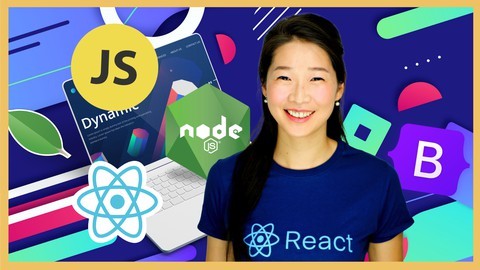
Welcome to the Complete Web Development Bootcamp, the only course you need to learn to code and become a full-stack web developer. With 150,000+ ratings and a 4.8 average, my Web Development course is one of the HIGHEST RATED courses in the history of Udemy!
At 55+ hours, this Web Development course is without a doubt the most comprehensive web development course available online. Even if you have zero programming experience, this course will take you from beginner to mastery. Here’s why:
The course is taught by the lead instructor at the App Brewery, London’s leading in-person programming bootcamp.
The course has been updated to be 2022 ready and you’ll be learning the latest tools and technologies used at large companies such as Apple, Google and Netflix.
This course doesn’t cut any corners, there are beautiful animated explanation videos and tens of real-world projects which you will get to build.
The curriculum was developed over a period of four years, with comprehensive student testing and feedback.
We’ve taught over a million students how to code and many have gone on to change their lives by becoming professional developers or starting their own tech startup.
You’ll save yourself over $12,000 by enrolling, but still get access to the same teaching materials and learn from the same instructor and curriculum as our in-person programming bootcamp.
The course is constantly updated with new content, with new projects and modules determined by students – that’s you!
We’ll take you step-by-step through engaging video tutorials and teach you everything you need to know to succeed as a web developer.
The course includes over 55 hours of HD video tutorials and builds your programming knowledge while making real-world websites and web apps.
Throughout this comprehensive course, we cover a massive amount of tools and technologies, including:
Front-End Web Development
HTML 5
CSS 3
Bootstrap 4
Javascript ES6
DOM Manipulation
jQuery
Bash Command Line
Git, GitHub and Version Control
Backend Web Development
Node.js
NPM
Express.js
EJS
REST
APIs
Databases
SQL
MongoDB
Mongoose
Authentication
Firebase
React.js
React Hooks
Web Design
Deployment with GitHub Pages, Heroku and MongoDB Atlas
By the end of this course, you will be fluently programming and be ready to make any website you can dream of.
You’ll also build a portfolio of over 25+ websites that you can show off to any potential employer.
Sign up today, and look forward to:
Animated Video Lectures
Code Challenges and Coding Exercises
Beautiful Real-World Projects
Quizzes & Practice Tests
Downloadable Programming Resources and Cheatsheets
Our best selling 12 Rules to Learn to Code eBook
$12,000+ worth of web development bootcamp course materials and course curriculum
Don’t just take my word for it, check out what existing students have to say about the course:
“Angela is just incredible, awesome and just fantastic in this course. I’ve never had such an instructor; detailed in every aspect of the course, gives precise explanations, gives you the anxiety to learn etc. She’s got that ability to make fun while explaining things for better understanding. I really love this course.” – Ekeu MonkamUlrich
“Angela is very thorough without ever being boring. I’ve taken MANY online courses in my life including my Bachelors and Masters degrees. She is by far the best instructor I’ve ever had. This course is packed with thousands of dollars worth of great instruction, and paced well enough for anyone to pick coding up and run with it- Thank you!” – J Carlucci
“Love the way Angela explains things. Easy to follow and full of logic. I can say she must have spent a lot of energy creating this great course. Thank you and I recommend it to all who’s interested in coding!” – Yiqing Zheng
“So far (on my third day) this course has taught me more than I was able to learn in multiple other programming courses. This course is clearly outlined and builds upon itself gradually in an easy to understand way.” – Normal Ramsey
“This course will take you from beginner to intermediate level for real. If you don’t know how to put together the pieces of web development this is what you’re looking for. Angela explains in an amazing way by creating projects all the way during this course, explaining the concepts in real practice. Thank you very much, Angela. I will always consider you my mentor. Look forward to taking more courses with you.” – Moises Dionisio Cruz
“An amazing course, perfect for absolute beginners at the start of their coding journey! Angela is an amazing tutor and can explain in the most simple and comprehensible way even complex coding notions. Learning web development cannot get any more fun!” – Zoe Moyssoglou
“It’s a different approach to teaching Web Development. I like that you are given everything possible to succeed from the onset.” – Ronick Thomas
The tutor is simply AMAZING, by far the best tutor I have ever had. I would give her 10 stars out of 5. She is not just punching the code and talking to herself, but she is actually explaining things. She keeps on giving really useful hints and she will give you a great load of other references. I always knew what I was doing and why I was doing it. All the extra challenges have just made me remember and understand things better. – Peter Dlugos
REMEMBER… I’m so confident that you’ll love this course that we’re offering a FULL money-back guarantee for 30 days! So it’s a complete no-brainer, sign up today with ZERO risk and EVERYTHING to gain.
So what are you waiting for? Click the buy now button and join the world’s highest-rated web development course.
Who this course is for:
If you want to learn to code through building fun and useful projects, then take this course.
If you want to start your own startup by building your own websites and web apps.
If you are a seasoned programmer, then take this course to to get up to speed quickly with the latest frameworks and NodeJS
If you want to take ONE COURSE and learn everything you need to know about web development, take this course
WHAT WILL YOU LEARN IN THIS COURSE:
Be able to build ANY website you want.
Craft a portfolio of websites to apply for junior developer jobs.
Build fully-fledged websites and web apps for your startup or business.
Work as a freelance web developer.
Master backend development with Node
Master frontend development with React
Learn the latest frameworks and technologies, including Javascript ES6, Bootstrap 4, MongoDB.
Learn professional developer best practices.
[ENROLL THE COURSE]
0 notes